Purple Martin ID: During the breeding season there are four distinct age/sex classes for Purple Martins. These are:
- adult male
- adult female
- subadult male
- subadult female.
After nestlings fledge, there is a fifth distinguishable age class of juvenile. Juveniles cannot be sexed by plumage.
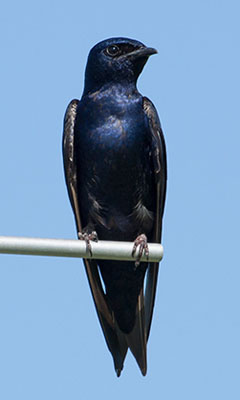
Adult (ASY) Male—Adult males are the only Purple Martins to have iridescent, purple feathers covering the entire body. They do not get their full plumage until the 3rd calendar year.
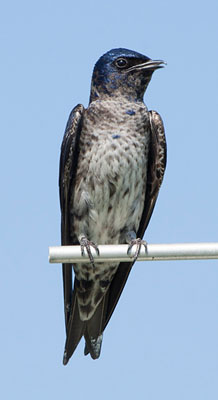
Subadult (SY) Male: Often the hardest to identify, will have at least one, but usually many solid-purple feathers either on their chins, throats, bellies, or undertails.
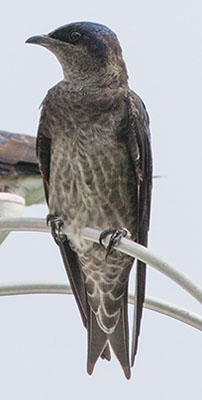
Adult (ASY) Female: Adult females have more purple on their head and back than subadult females. Their undertail feathers are much darker than subadults—all brown/grey feathers with a white rim on the outer edge. They will not have any purplish feathers on their chest, belly, or undertail.
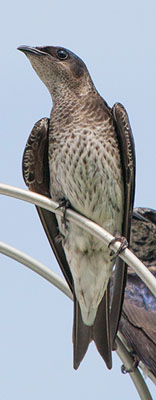
Subadult (SY) Female: Subadult females have a much lighter purple to brownish color on their back feathers. The undertails are all white or light-colored feathers with brown pinstripes down the center.
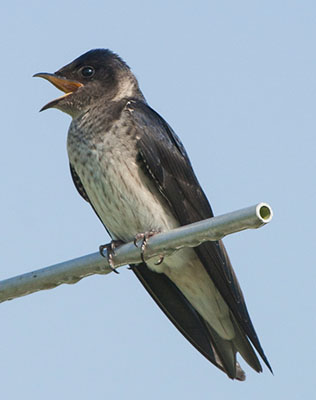
Hatching Year (HY): The sex of a hatching year or juvenile bird cannot be determined by sight. Hatching year Purple Martins will have a stubby tail—shorter than the wing feathers. They are a dull brownish-grey color and still have yellow inside their beak.
Plumage may be challenging to determine just by sight. Subadult males will have at least one, but may have many, solid-purple feathers on either their chin, throat, belly, or undertail. The photos below all show subadult males with variances in their plumage. Try using binoculars, a spotting scope or taking a picture of the bird that you can enlarge later to assist in identification.
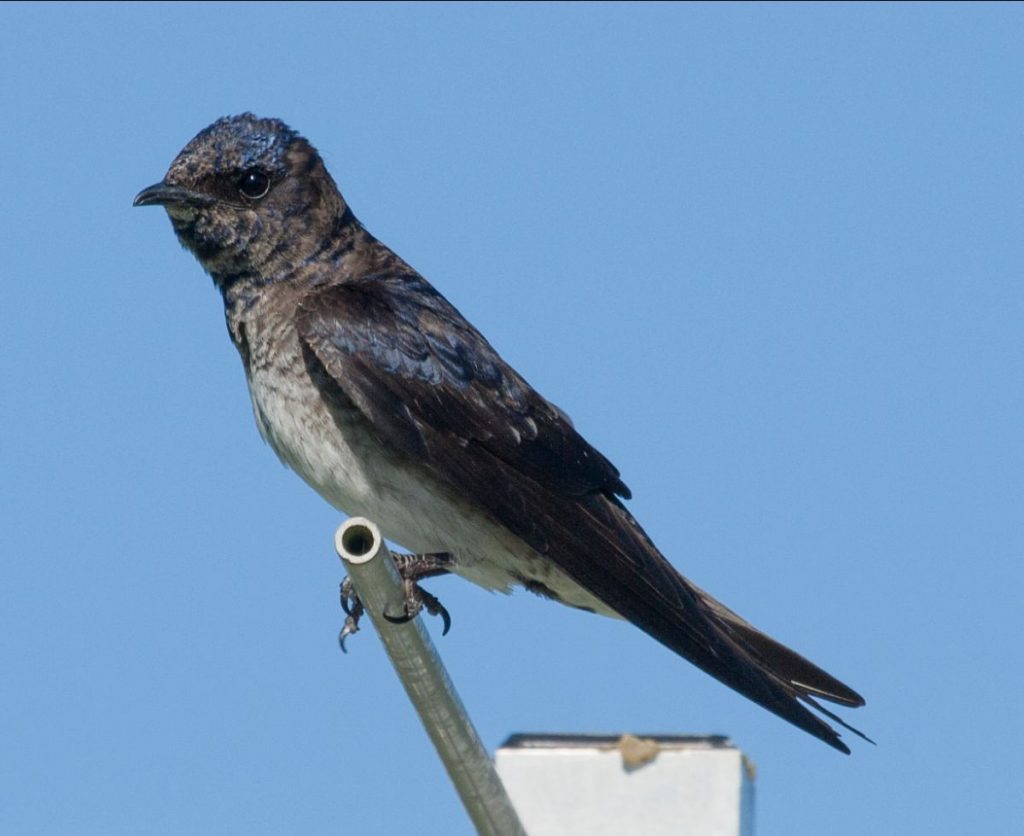
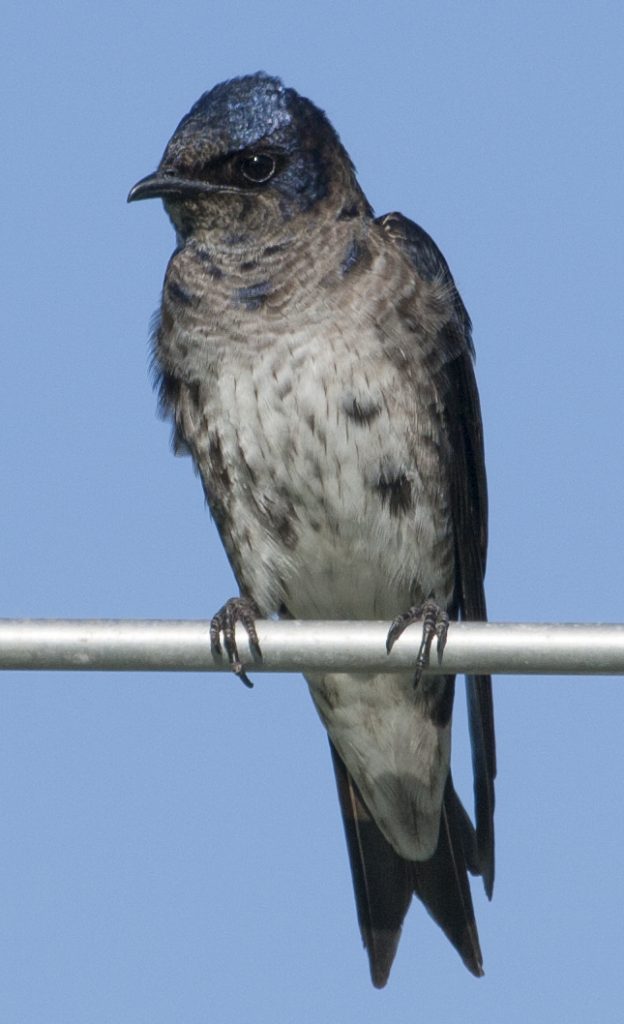
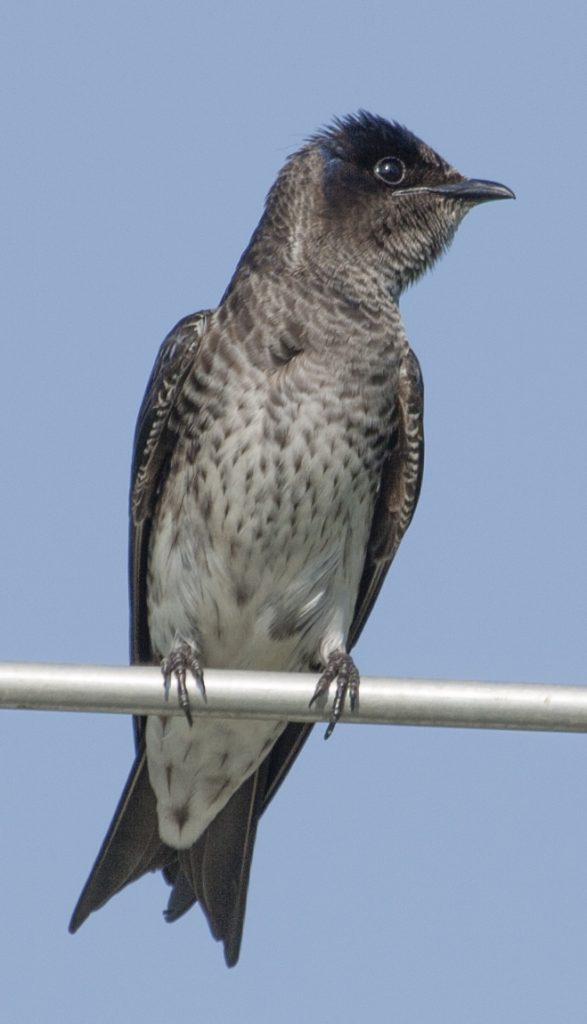
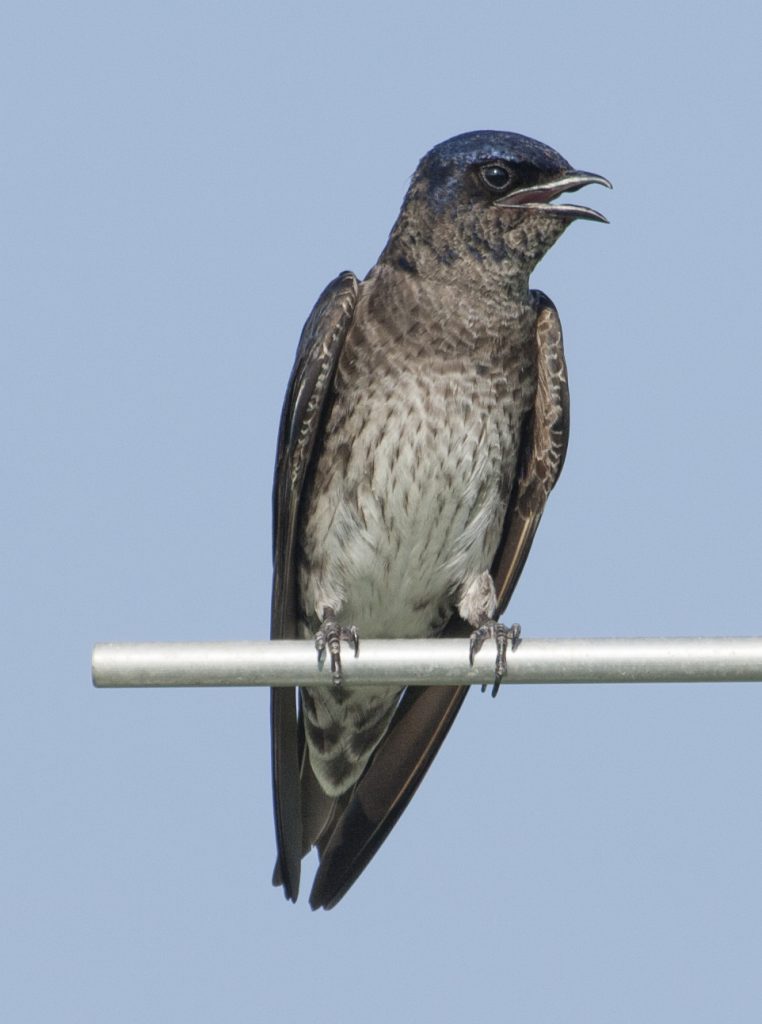
You can also use their vocalizations or behavior. There are certain calls that only the males sing. Males often make the common croak song which ends with a ‘krieeek’ sound and is oftentimes accompanied by raised head feathers and a thrown-open beak. You can learn more about Purple Martin vocalizations and hear their calls here.
Behavior can also be a clue. If you’re unsure, watch your colony site for a period of time—if you see a martin ‘tailing’ or following a female, either down to the ground or up to the cavity, it is most likely a subadult male.
Recommended Reading:
https://www.purplemartin.org/uploads/media/tattletails11-4-376.pdf
Shop:
